How Many Inches Is 10 Centimeters Equal to
Rulers are an essential tool to have, but if you're struggling with how to read a ruler, you're not alone. There are so many lines on a ruler, it can get confusing to figure out what they all mean. In this guide, we'll explain why you should know how to read a ruler and give you step-by-step instructions on how to read a ruler in inches and cm. We'll also provide you with some helpful resources you can use to keep honing your ruler-reading skills. Knowing how to read a ruler is important, not just for school but also for daily life. For example, if you wanted to make something out of construction paper, you'd likely need to use a ruler to measure out how much of the material you would need. Or what if you wanted to frame a photo you have? In this case, you might have to measure the picture to see what kind of frame it would fit in. The truth is that there are tons of moments in life when you'll need to know how to read a ruler. And if you don't know how to read a ruler, then you'll likely suffer some consequences. For instance, what if you make two pieces of something that don't fit together because one is shorter or longer than it was supposed to be? Or what if you mess up a science experiment because you didn't accurately read the measurement of a piece of string you cut? It's pretty obvious that knowing how to read a ruler is important to not just your grades in school but also your day-to-day life. There are two types of rulers you can use: the inch, or imperial, ruler and the centimeter, or metric, ruler. Inches correspond to the imperial system, which is the main measuring system used in the US and a smattering of other countries. Meanwhile, centimeters are part of the metric system, which is used around the world in both everyday life and science. While we will be providing pictures you can use to follow our instructions, we recommend getting out your own ruler or measuring tape so you can follow along in real time. Let's start by looking at how to read a ruler in inches. If you're American, this is the measurement you probably know better than centimeters, which are sometimes included on your standard 12-inch, or 1-foot, ruler (we'll go over how to read a ruler in cm in the next section). Here's a picture of an inch ruler: Right away, you should be able to tell that this ruler uses inches, as it's divided into 12 equally spaced areas (labeled 1-12), and we know there are 12 inches in a foot (ignore the cm below). Now, notice the lines between each inch, with some longer and some shorter than others. Each of these tiny lines represents a fraction of an inch. There are five different lengths of lines in total. Each inch is divided into 16 lines, meaning that the space between each line is 1/16 inch long—this is the smallest length you can measure with a ruler. (Note that some rulers only go down to 1/8 inch lines, whereas others go down to 1/32 inch lines.) The inch is the biggest unit on a ruler and is represented by the longest line. Each 1-inch line is labeled with a number indicating what inch it is on the ruler (as the image above shows). Example: If you were to measure the length of a sheet of computer paper, the piece of paper would come up to the 11-inch mark on your ruler, indicating that it's exactly 11 inches long. The second-biggest unit on a ruler is the 1/2 inch, which is represented by the second-longest line. These typically aren't labeled but might be on some rulers (in which case you'd see numbers such as 1 1/2 in, 2 1/2 in, etc.). The 1/2-inch line is located midway between every inch on a ruler. The midpoint between 7 and 8 inches, for instance, would be 7 1/2 (or 7.5) inches. Example: If you were to measure the width (instead of length) of a piece of computer paper, the piece should come up exactly to the 1/2 inch line between 8 and 9 inches, indicating that the width is 8 1/2 (8.5) inches. The third-biggest lines on a ruler are the 1/4 inch lines, which appear midway between the 1/2 inch and whole inch lines: If you counted in 1/4 inches on a ruler, you'd see that the fourth line after 0 inches equals 1/4 inch, the eighth line equals 2/4 (1/2) inch, and the 12th line equals 3/4 inch. Example: Say you're measuring a piece of cloth and the ruler ends at the fourth line after the 10-inch mark. This would mean that the cloth is 10 1/4 (10.25) inches long. Next is 1/8 inch, which is the second-smallest unit of a ruler. The 1/8 lines are found midway between each 1/4-inch line: If you counted in 1/8-inch increments, you'd find that the second line after 0 equals 1/8 inch, the fourth line 2/8 (1/4) inch, the sixth line 3/8 inch, the eighth line 4/8 (2/4 or 1/2) inch, the 10th line 5/8 inch, the 12th line 6/8 (3/4) inch, and the 14th line 7/8 inch. Example: Say you decide to measure the length of a corn on the cob. You find that your ruler comes to the second line after the 6-inch mark. This would mean that the corn is 6 1/8 inches long. Finally, the smallest unit on a ruler is 1/16 inch.These tiny lines that represent 1/16 inch come between all 1/8-inch lines: Example: You're trying to measure the length of your pointer finger. The ruler comes to the seventh line past 3 inches. This would mean that your finger is 3 7/16 inches long. Answers Now that we've looked at how to read a ruler in inches, let's go over how to read a ruler in cm. This is especially important to know if you're studying science (recall that science generally uses the metric system—not the imperial system). Knowing how to read a ruler in cm is also helpful for people who'd prefer to not work with fractions (which you must do with inches) and who'd like to work with other units instead (in this case, millimeters). The standard metric ruler is 30 cm long. Each centimeter is labeled with a number to show the measurement it's referring to. You might see inches on the other side of your metric ruler. In this case, refer to the instructions above to learn how to read a ruler in inches. Also, be aware that 30 cm does not directly equal 12 inches, even though they are often put on the same ruler! Now then, here's what a typical metric ruler looks like: You can tell that this is a metric ruler because it's divided into 30 equally spaced sections and has "cm" written on it(ignore the inches below). Like the inches ruler, you'll see tons of lines on a metric ruler, with some longer and some shorter. Each line represents 1 millimeter, which is equal to 1/10 or 0.1 cm (so 10 mm make up 1 cm). There will always be 10 lines from one centimeter to the next centimeter. In total, there are three different lengths of lines on a metric ruler. The longest line represents the biggest unit on the ruler: 1 cm. Each centimeter is labeled on the ruler (1-30). Example: You take out a ruler to measure the width of your fingernail. The ruler stops at 1 cm, meaning that your nail is precisely 1 cm wide. The middle-length line on a metric ruler is the 1/2 (0.5) centimeter line, which comes midway between every centimeter (in other words, it's the fifth line after every whole centimeter): So if you counted five lines from 9 cm, for instance, you'd get 9.5 cm (or 95 mm). Example: Say you're measuring the width of your smartphone, and it comes up to the fifth line after 4 cm on your ruler. This would mean that the phone is 4.5 cm (45 mm) wide. The smallest unit a metric ruler can measure is 1 mm, or 0.1 cm. These are the smallest lines on the ruler, that is, the ones that come between the whole centimeter and 1/2 centimeters: Example: You're measuring the length of a strand of hair. The strand comes to the ninth line after 16 cm on the ruler. This would mean the strand is 16.9 cm long (that's 16 cm + 9 mm). Answers If you want any extra assistance with learning how to read a ruler in cm or inches, videos and worksheets can be excellent resources. Here are two easy-to-follow videos to further help you learn how to read a ruler: How to Read a Ruler in Inches How to Read a Ruler in cm If you'd rather test out your ruler-reading knowledge with practice questions, then it's a great idea to download free measurement worksheets from these math sites: All of these resources, in addition to the handful of practice questions we gave you above, should be enough to get you reading a ruler in no time at all! Got questions about decimals and fractions?Our expert guides will teach you how to convert decimals to fractions and how to add and subtract fractions. Metric rulers usually have only centimeters and millimeters on them. But did you know there's an even tinier unit called nanometers? Learn how to convert nanometers to meters and other measurements with our in-depth guide. Ever seen Roman numerals but didn't know how to read them? Check out our detailed guide and you'll be on your way to understanding this ancient numerical system!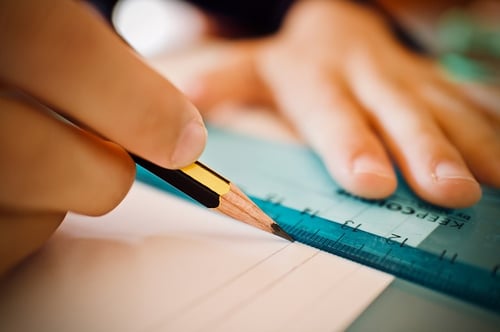
Why You Should Know How to Read a Ruler
How to Read a Ruler: Imperial vs Metric
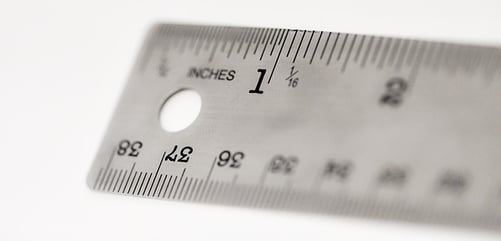
How to Read a Ruler in Inches


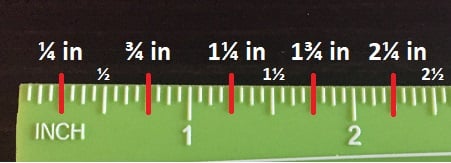
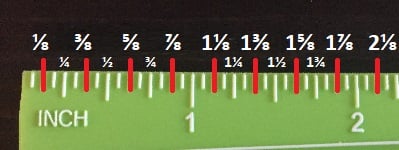
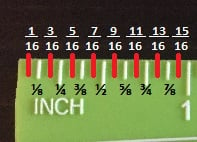
Inch Ruler Practice Questions

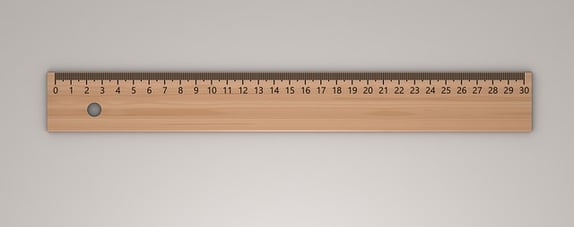
How to Read a Ruler in Centimeters


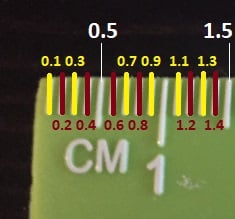
Centimeter Ruler Practice Questions

6 Additional Resources for Learning to Read a Ruler
What's Next?

About the Author
Hannah received her MA in Japanese Studies from the University of Michigan and holds a bachelor's degree from the University of Southern California. From 2013 to 2015, she taught English in Japan via the JET Program. She is passionate about education, writing, and travel.
How Many Inches Is 10 Centimeters Equal to
Source: https://blog.prepscholar.com/how-to-read-a-ruler-inches-cm